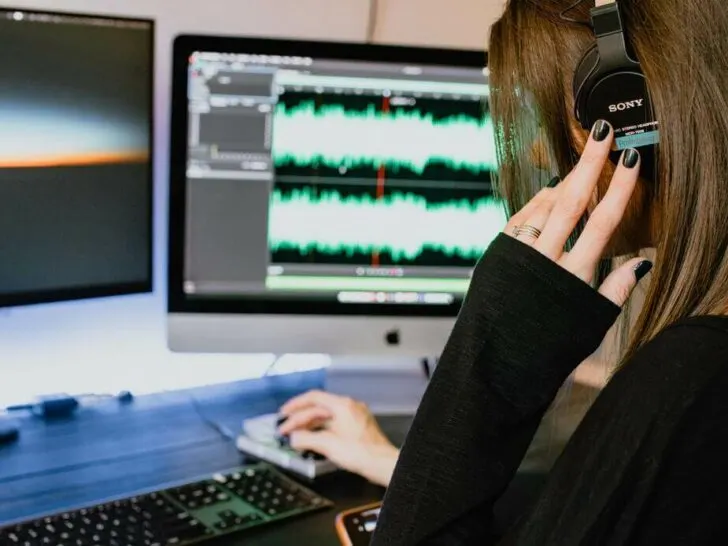Audiophiles are often seen arguing about the quality of different sampling and bit rates. Hence, today we will analyze the difference between 24 bit 96 kHz and 24 bit 192 kHz.
So, between 24/96 vs 24/192 sound quality, which one comes out on top?
24-bit/192 kHz would be the better option, keeping only sound quality in mind. That’s because it has a double sampling rate compared to 24/92. This allows an almost exact recreation of the input signal with better bass and treble, and there are fewer chances of quality loss. However, producing or listening to such high quality audio requires high-end equipment that costs much more than regular ones.
In the upcoming sections, we will dive deep to analyze which one is better and why.
24/96 vs 24/192 Sound Quality: Quick Comparison
Before we start analyzing these formats, let’s take a look at the quick comparison to get a glimpse of what’s coming next.
| Factors | 24 bit 96kHz | 24 bit 192kHz |
| Sampling Rate | 96,000 samples/second | 192,000 samples/second |
| Frequency | Upto 48kHz | Upto 96kHz |
| Bass and Treble | Decent | Good |
| Quality Loss | High | Low |
24/96 vs 24/192 Sound Quality: In-depth Comparison
In this in-depth comparison, we’ll explore the key differences that contribute to sound quality between 24/96 and 24/192.
Sampling Rate:
The main difference between 24 bit 96 kHz and 24 bit 192 kHz is their sampling rate. 24/96 has a sampling rate of 96,000 samples per second. On the other hand, 24/192 has a sampling rate of 192,000 per second.

A format with a higher sampling rate is able to recreate the audio without any quality loss. So, obviously, a higher sampling rate means better quality. Hence, between 24/96 and 24/192, 24/192 would be better if you want higher quality audio.
Winner: 24-bit 192 kHz
Frequency:
24-bit 96 kHz is able to reproduce frequencies up to 48 kHz, and 24-bit 192 kHz can reproduce frequencies up to 96 kHz.
The Nyquist theorem states that a signal can only be replicated exactly if the sampling rate is at least twice as high as the frequency.
Because the 24/192 has a sampling rate double that of the 24/96, it has more ability in terms of rendering a higher frequency signal. That’s why 24/192 is the winner in this scenario.
Winner: 24-bit 192 kHz
Bass and Treble
Audios that were produced in 24-bit 192 kHz have a deeper bass and sweeter treble compared to audios that were produced in 24-bit 96 kHz.

Just because the sampling rate is twice as high as that of 24/96, 24/192 can reproduce the signal more accurately, resulting in bass and treble that sound much better.
But as the difference is very marginal, you will need a top-class headphone to detect what’s changed.
Winner: 24-bit 192 kHz
Quality Loss:
As 192kHz is less compressed compared to 96kHz, the quality loss is less prominent in 192kHz. Furthermore, the higher sampling rate enables it to reproduce audio with less quality loss.
The higher sample rate of the 24-bit 192 kHz audio format allows for a greater number of samples to be taken per second, which means that it can capture more audio data than the 24-bit 96 kHz audio format. This increased amount of data can result in more accurate audio reproduction and less quality loss.
Winner: 24-bit 192 kHz
DACs:
When it comes to DACs, as they have low pass filters, 24/192 sampling rate are perfect for them. Whereas, DAC filtering rolls off rather quickly in 24/96.
DACs prefer higher sampling rates in general. While DACs fare well with 24/192, they don’t hold up when used with 24/96. Some noise will be evident in the sounds in the case of the latter.
24/96 vs 24/192 Sound Quality: Final Verdict
Considering every aspect, 24/192 is technically better than 24/96 because of the higher sampling rate. Because the sampling rate of 24/192 is double that of 24/96, it can recreate the audio with better bass and treble and less quality loss.
When using expensive audio equipment, the level of details will make a huge difference. In such cases, 24/192 can work wonders, at least compared to the 24/96. But for normal audio files like in movies or audiobooks that do not have that much detail, 24/96 will do just fine.
Does 24/192 Make a Difference?
By now, you should understand that 24/192 is a better option in every way compared to 24/96. But there’s a catch.
The level of detail and sophistication that 24/196 provides can go unnoticed by normal audiences. Only the trained ears of sound engineers and audiophiles can understand the difference in quality.
Recording or producing audio in 24/192 is a hassle, considering the requirement of state-of-the-art equipment and the high budget. Similarly, when you are playing the audio that was recorded in 24/192, you will need high-end gadgets.
So, unless you have an ear for such detailed audio, 24/96 should do the job for you. 24/96 would provide a quality that might be slightly lesser than 24/196. But the quality is still high compared to other bit-rates. In addition, 24/96 will be more convenient and affordable.
Frequently Asked Questions (FAQs):
Is 192 Kbps better than 320kbps?
No, 192 kbps is not better than 320 kbps. That’s because the higher the bitrate, the better the sound quality will be. In 320 kbps audio, you can hear the details better compared to 192 kbps.
Which audio format is highest quality?
WAV and AIFF are considered to be the highest quality audio formats. Those formats are the best choice for mixing and mastering engineers looking to retain the highest quality.
How many Kbps is best for audio?
320 kbps is the highest quality for the MP3 format. However, the most commonly used bitrate is usually 256 or 192 kbps; these two bitrates also provide decent audio quality.
Conclusion
So, between 24/96 vs 24/192 sound quality, the audible difference is not really perceptible for most listeners. So, the extra cost and file size may not be worth it.
But for audiophiles, the case may be different. In the end, the preference is up to you. The choice between the two formats comes down to personal preference and specific use cases.






![Sennheiser HD 650 vs Philips Fidelio x2 [Which One To Choose?] Sennheiser HD 650 vs Philips Fidelio x2 [Which One To Choose?]](https://reviewnery.com/wp-content/uploads/2023/03/sennheiser-hd-650-vs-philips-fidelio-x2-211x150.webp)